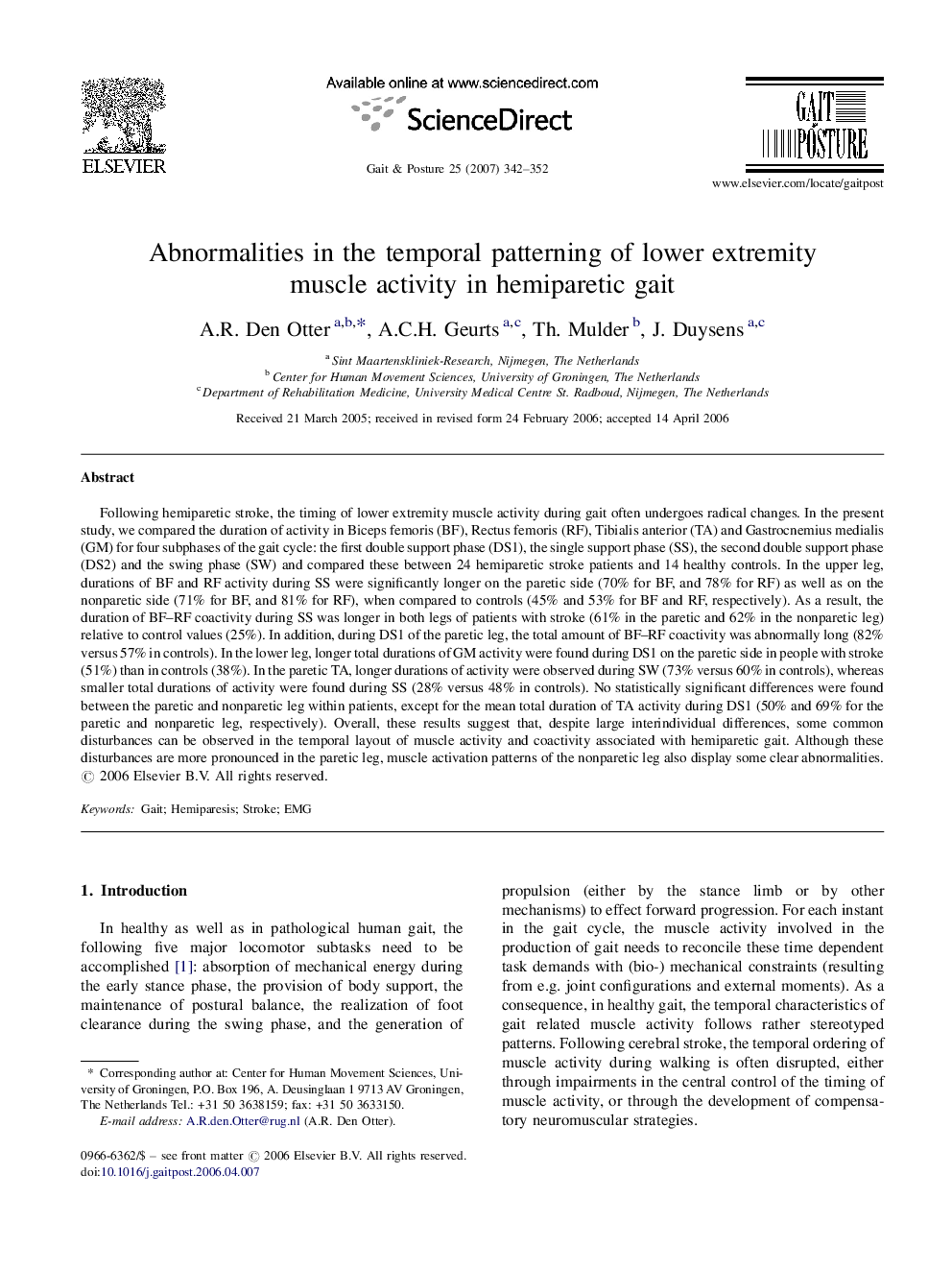| کد مقاله | کد نشریه | سال انتشار | مقاله انگلیسی | نسخه تمام متن |
|---|---|---|---|---|
| 4058211 | 1265711 | 2007 | 11 صفحه PDF | دانلود رایگان |

Following hemiparetic stroke, the timing of lower extremity muscle activity during gait often undergoes radical changes. In the present study, we compared the duration of activity in Biceps femoris (BF), Rectus femoris (RF), Tibialis anterior (TA) and Gastrocnemius medialis (GM) for four subphases of the gait cycle: the first double support phase (DS1), the single support phase (SS), the second double support phase (DS2) and the swing phase (SW) and compared these between 24 hemiparetic stroke patients and 14 healthy controls. In the upper leg, durations of BF and RF activity during SS were significantly longer on the paretic side (70% for BF, and 78% for RF) as well as on the nonparetic side (71% for BF, and 81% for RF), when compared to controls (45% and 53% for BF and RF, respectively). As a result, the duration of BF–RF coactivity during SS was longer in both legs of patients with stroke (61% in the paretic and 62% in the nonparetic leg) relative to control values (25%). In addition, during DS1 of the paretic leg, the total amount of BF–RF coactivity was abnormally long (82% versus 57% in controls). In the lower leg, longer total durations of GM activity were found during DS1 on the paretic side in people with stroke (51%) than in controls (38%). In the paretic TA, longer durations of activity were observed during SW (73% versus 60% in controls), whereas smaller total durations of activity were found during SS (28% versus 48% in controls). No statistically significant differences were found between the paretic and nonparetic leg within patients, except for the mean total duration of TA activity during DS1 (50% and 69% for the paretic and nonparetic leg, respectively). Overall, these results suggest that, despite large interindividual differences, some common disturbances can be observed in the temporal layout of muscle activity and coactivity associated with hemiparetic gait. Although these disturbances are more pronounced in the paretic leg, muscle activation patterns of the nonparetic leg also display some clear abnormalities.
Journal: Gait & Posture - Volume 25, Issue 3, March 2007, Pages 342–352